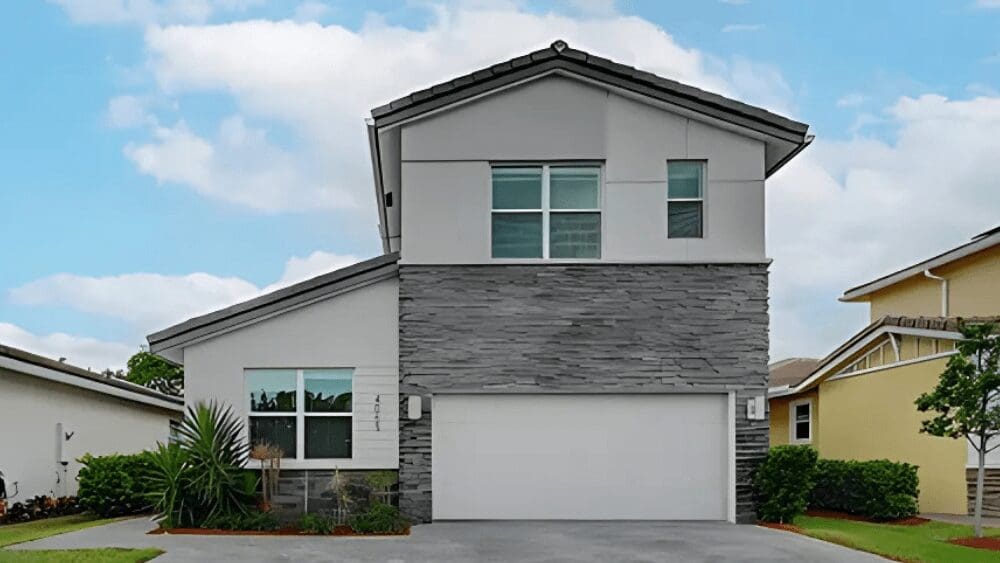
With research indicating that 37% of consumers today are willing to seek out and pay up to 5% more for products that are environmentally friendly, it’s no wonder that green home improvements have been a trending topic over recent years. The interest in doing good for our globe continues to increase, and homeowners are looking for creative solutions to improve both their homes and their livelihoods. Real estate agents understand that buyers and sellers alike have significant interest in eco-conscious home upgrades — 59% of homeowners reported an interest in sustainability in a 2019 National Association of Realtors survey. If you’re among this majority and you’ve been considering green home improvements of your own, you may be wondering where to start and how to determine which upgrades will prove most valuable. In this article, we’ll explain strategies for how to determine which areas of your home would benefit most from going green, and we’ll take a closer look at some of the associated lifestyle benefits beyond the obvious money-saving advantages. Unless your home was constructed within recent years, there’s a high likelihood that it could use some tightening up. While visible cracks and openings to the outside are obvious spots in need of attention, air can slip through even the most unassuming of portals. “One of the biggest offenders that people don’t realize are can lights in the ceiling; a ton of air escapes through those,” says Rob McGarty, a top Seattle-based agent who regularly advocates for energy efficiency programs. McGarty notes that while new-construction homes will undergo a blower door test to catch air leaks, homeowners can similarly spot weaknesses in their home with the aid of a smoke pen. These devices are inexpensive (there are many on the market for under $50) and are highly effective for helping to detect air leakage around windows, doors, recessed lighting, or any other suspect areas of your home. Simply release a stream of smoke and see where it’s being pulled. Once you’ve identified where air is escaping, it’s a simple matter of caulking and sealing. This is an easy project that can be done yourself with minimal upfront expense. You’ll just need a few basic supplies: Energy.gov has a great how-to caulking guide, but, essentially, you’ll clean and dry the area to be sealed, apply a fresh line of caulk, and let it set for 24 hours. Quick and easy! Aside from eliminating pesky drafts, sealing your home can help reduce heating and cooling costs. You’ll save money and you’ll be more comfortable. Win-win! One of McGarty’s favorite quotes comes from a 2009 line from then-president Barack Obama, delivered while pushing for green home improvements: “Insulation is sexy stuff.” Insulating your home — even if it’s just adding another layer to the existing insulation in your attic — is one of the easiest, least expensive upgrades you can make that will yield the biggest return on investment. “People tend to spend, you know, $30,000 on new windows because they can see them, and there’s a lot of advertising for windows, so they feel like it’s something they should do,” notes McGarty. “Whereas people are hesitant to spend $2,000 insulating their house, but they would get that money back in no time because they’re saving so much energy. With windows, they’ll never make back that investment.” The benefits of home insulation are numerous, but it’s an underrated energy-saving tactic. “No one ever appreciates insulation until it’s installed,” says McGarty. “Homeowners are really hesitant to do it because they can’t see it, but once they do, they not only gain the energy efficiency benefits, they also gain a lot of sound deadening.” If you’re serious about making green improvements to your home, your next step could be a home energy audit. This involves a professional coming to your house to complete a room-by-room inspection and analysis of recent utility bills. They may perform airflow tests and conduct thermographic scanning, and they’ll likely ask about your daily habits and use of the home to get a full picture of where improvements would be most useful. After a thorough assessment, the home energy auditor will note areas of concern and provide you with suggestions for improvements. This service may even be provided at no cost (or a reduced cost) through your utility provider, so be sure to start there before hiring a third-party evaluator. You’ll save both time and money with an expert opinion on which projects are most worth tackling for your specific home. Yes, as mentioned above, windows are expensive … but if yours are cracked or damaged beyond reasonable repair, it may be time to consider replacing your windows. Your exterior door is also worth evaluating with age; both for purposes of insulation and home security. Energy savings, yes, and a new door can boost your home’s curb appeal. Day-to-day, you’ll enjoy the ease of smooth-opening windows, and the dual advantage of dual-paned windows insulating against elements and sound. An often overlooked but unquestionably important component of your home’s heating and cooling system is the thermostat. You can have a brand-new, top-of-the-line HVAC system, but if your thermostat is past its prime, you’re not optimizing your temperature control capabilities. A new thermostat, particularly if you opt for a smart thermostat, will reliably detect and maintain the temperature throughout your home. This is especially good news if you have a newer HVAC system because a modern thermostat can work together with the unit to detect energy usage, serving to make your house more comfortable while avoiding taxing your HVAC unit with constant on-off activity. You guessed it: you’ll save money, you’ll help avoid wear-and-tear on your HVAC system, and you’ll be cozily warm or refreshingly cool throughout the year. Plus, if you have a smart thermostat, you can adjust your home’s temperature right from your smartphone. No more leaving for summer vacation and wondering if you left the air conditioning on full-blast. Popular in the southern part of the United States, ceiling fans are a great way to keep the air flowing independently of your HVAC system. Most fans can swap their direction to shift air either toward the floor or ceiling, allowing you to customize where you’d like warm air to concentrate. Ceiling fans can be affordably acquired and easily installed. If you can install a light fixture, you can likely install your own ceiling fan. Enjoy year-round comfort and less reliance on your air conditioning. Upgrading to a tankless water heater can be an excellent green home improvement choice, thanks to its ability to provide hot water on demand while reducing energy usage up to 34%. Tankless heaters also typically last longer than traditional storage water heaters, which can spell additional savings in the years to come. There is a caveat in that tankless water heaters tend to perform best for households using less than 40 gallons of water per day. If you have a large family or regularly need simultaneous hot water use—like running the dishwasher and washing clothes while someone is taking a shower—you might consider installing more than one tankless heater, or sticking with your conventional system for the time being. In either case, McGarty warns that the on-demand convenience of a tankless water heater can actually backfire on your savings efforts. Having virtually unlimited hot water may lead to using more of it simply because you can, thus counteracting any savings you may have seen from not paying to heat water in a tank. “There’s a new type of water heater that uses heat pump technology rather than resistant heat, and those are actually much more energy efficient than tankless — and most utility companies have a giant rebate for those,” says McGarty. If swapping to a tankless or heat pump water heater isn’t the best option for you right now, wrapping your existing tank in a water heater blanket will help insulate and improve efficiency with minimal investment. Hot water on demand? Enough said. (Although, yes, conserving energy is a nice perk.) This one takes the cake for easiest green home improvement. Rainwater collection can be as straightforward as placing a rain barrel in your backyard, making it a practical, eco-friendly option for just about any suburban dweller. While you may not be able to go off-grid with your rain harvest, depending on your local climate, you can use collected rainwater to water your lawn or garden, wash your car, pressure-wash your house, or even flush toilets. Collecting rainwater can be inexpensive, and there’s very little effort involved. You may also find it rewarding to monitor your barrel levels on drizzly days, knowing that you’re making the most of a vital natural resource. Obvious greenery puns aside, landscaping is one of the most effective ways to improve the exterior appearance of your home while lending an environmental benefit. On a grander scale, consider xeriscaping your yard. Xeriscaping is a method of landscaping designed to reduce the need for irrigation, meaning that the garden becomes nearly self-sufficient based on the offerings of the climate. In addition to simply looking nice, planting trees helps to provide natural shade and wind protection for your home. Xeriscaping is pricey, but your yard will look amazing, and you can put those garden hoses in storage. Even if you lack gardening experience, you can grow fresh herbs and vegetables right at home. In fact, you don’t even need a garden — a pot or planter box will suffice. With a bit of potting soil and regular watering, you can have a luscious spread of basil, mint, or your own herbs of choice in no time. Seeds for various vegetables and fruits are often available right at your grocery store, so next time you’re out for the weekly shop, take a look and consider growing peppers, tomatoes, or zucchini from the comfort of your own porch. There’s nothing quite like ducking out mid-dinner prep to harvest a few sage leaves or crisp lettuce that you’ve grown yourself. Today’s kitchen appliances are greener than ever, so whether you’re planning to stick around or sell your home in the near future, consider replacing your dated appliances with more energy-efficient models. Your dishwasher and refrigerator are good places to start. “Modern refrigerators have much more efficient compressors that use significantly less energy,” says McGarty. He adds that many utility companies offer rebates for refrigerators “to try to encourage people to get rid of those older fridges that are using a lot more energy.” As technology has advanced, the energy required by refrigerators has nearly halved every 15 years since the 1970s. Dishwashers are on par with their own upgrades, using half the water and energy today that would have been required just 20 years ago. Oh, and if you’re concerned about mismatched appliances resulting from selective upgrading? Don’t be. “It’s interesting; when we look at higher-end homes, a lot of times the appliances are not matching,” notes McGarty. “They’re intentionally not matching appliances because the homeowners have bought the best: the best fridge, the best dishwasher, the best stove, and so on.” Improved efficiency, sure … but when’s the last time you enjoyed that new-dishwasher smell? No matter what your budget or lifestyle preferences, there are almost certainly small steps you can take to make your home more environmentally friendly. “Insulation and air-sealing are the most important things you can do,” confirms McGarty. “Everything else is not nearly as important.” While saving money is often the biggest motivator for these improvements, don’t discount the feel-good morale boost that comes with knowing you’re taking steps toward reducing your carbon footprint. Added comfort and convenience in your daily life? Well, that’s just a bonus.First things first: Seal it up
What’s the benefit?
Next priority: Insulate
What’s the benefit?
Go deeper with an energy audit
What’s the benefit?
Replace access points
What’s the benefit?
Upgrade your thermostat
What’s the benefit?
Install ceiling fans
What’s the benefit?
Go tankless (or invest in a heat pump)
What’s the benefit?
Collect rainwater
What’s the benefit?
Landscape your way to a green home
What’s the benefit?
Grow your greens
What’s the benefit?
Upgrade your appliances
What’s the benefit?
Going green is a journey



